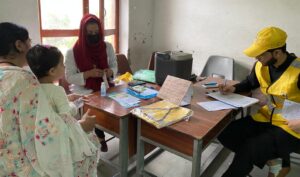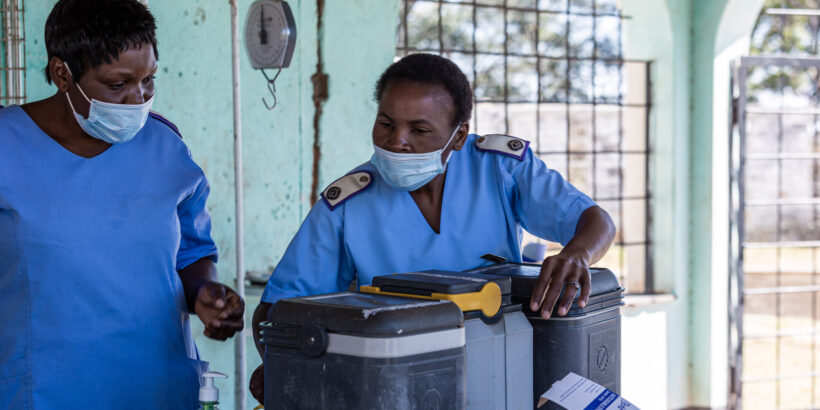Antimicrobial resistance, multidrug-resistant, antibiotic resistant, drug resistance – what does it all mean? Research shows that the technical terminology used to communicate the phenomenon of bacteria and viruses becoming non-susceptible to (or resistant to) certain treatments can be confusing and, at times, misleading. The team at Take on Typhoid refers to drug resistant typhoid – and multi-drug resistant and extensively drug-resistant typhoid – frequently. But why do we use this language? Why does it even matter?
Defining antimicrobial resistance
First, let’s define some common terms. ‘Antimicrobial’ is a term that refers to all chemicals and medicines that can kill microorganisms (viruses, bacteria, fungi, and parasites), while ‘antibiotic’ is a more specific term that refers to the medicines that kill or inhibit bacteria. Antimicrobial resistance (commonly referred to as AMR) occurs when bacteria, viruses, fungi, and parasites change over time and no longer respond to antibiotics, antivirals, or other medicines, therefore making these treatments ineffective. When this happens infections become increasingly difficult or nearly impossible to treat. These organisms are referred to as being “resistant” or “nonsusceptible” to the respective treatment.

This is a growing global health concern, and the World Health Organization declared AMR as one of the top ten global health threats facing humanity. When considering typhoid specifically, drug resistance is an increasing threat. Researchers and medical professionals have noted the complexity of terminology used to describe drug resistant typhoid. Researchers in the typhoid filed commonly use the term “multidrug-resistant (or MDR)” for strains of typhoid resistant to several broad-spectrum and first-generation antibiotics, including chloramphenicol, ampicillin, and cotrimoxazole. Typhoid researchers also use the term “extensively drug-resistant (or XDR)” for typhoid strains that are resistant to all but one oral antibiotic called azithromycin.
Why does it matter and how do we talk about it?
With the myriad of terminology, how do we talk about this increasing health threat and raise awareness of the urgency for typhoid prevention and control? The Typhoid Vaccine Acceleration Consortium and Coalition against Typhoid, the partners behind Take on Typhoid, use the term “drug resistant typhoid,” which research has shown to be better understood between diverse audiences. A recent study found that “antimicrobial resistance” and “AMR” scored low on a survey regarding memorability and risk association. Researchers deemed the term “antimicrobial resistance” to be ‘unsuitable for public health communication’ and highlighted the urgent need to use a memorable and understandable term so that all audiences understand the urgent threat and are incentivized to work toward appropriate use of antibiotics. A qualitative study in Southeast Asia confirmed that “antibiotic” or “antimicrobial” resistance phrases can be difficult for general populations to understand. Several studies on AMR recognize that the terminology for drug resistance has a ‘language problem’ and efforts are underway to more clearly communicate the issue.
Drug resistant typhoid, including MDR and XDR is a significant, growing concern. Prevention of drug-resistant typhoid transmission and infection is crucial. And for this, proven solutions exist: typhoid conjugate vaccines (TCVs) protect against typhoid, including drug-resistant strains, in a single dose. TCVs were effective in controlling drug-resistant typhoid outbreaks in Pakistan and Zimbabwe, protecting children from extensively drug-resistant typhoid. Additionally, access to clean water and improved sanitation help limit transmission of drug -resistant typhoid strains. While the terminology can be complex, the solution is simple. When we can talk about drug resistant typhoid and collectively understand the urgency of the problem, we can act. Now let’s work together to Take on Typhoid!
Cover Photo: Healthcare workers in Zimbabwe prepare typhoid conjugate vaccines. Credit: Kudzai Tinago/ TyVAC.



